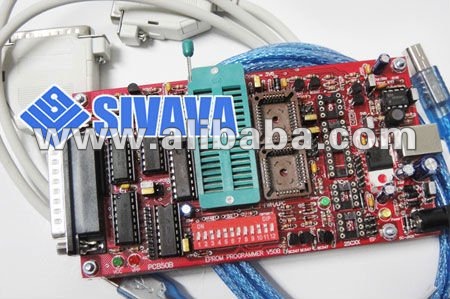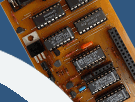I can't get the programmer to read PLCC32 lpc/fwh bios chips correctly.
UPDATE: It works now and was a hardware issue, see later posts
Dumping an Arduino Uno R3 chip flash via SPI (ICSP) worked fine, as far as I know.
The chip jumpers are in standard configuration and set to 4.5 pbc mode (both configuration jumpers set left). The software is set to 5.0.
To address the usual problem sources:
- I'm using a hardware parallel port with ebc/epp capabilities
- I'm using an external 12V power supply capable of 1.5A current
- Dip switches were set accordingly to the software information.
- I used the appropriate LPC/FWH socket
- I have tried 4 chips of the SST49LF line and one PMC PM49LF.
SST 49LF004A is read as 0x00 / 0x00, SST 49LF004B is read as 0x04, 0x04 on the same settings, which is equal to the ID taken of thin air in the socket.
My problems seem identical to:
viewtopic.php?f=10&t=4795
The issues were symmetrical on the FWH port and on the ZIF socket I used for first multimeter tests.
To make sure that it's not a simple solder error, I went over some non-perfectly soldered component solder points and resoldered some of them. It made no difference.
I have checked the output voltages with a multimeter.
Some lines are strange. Should any line considerably differ from others?
Details
jupered to 5V VCC, 12.5V VPP, external power supply
1 - VPP: 13.60V
32 - VCC: 4.93V
Data lines not mentioned are on 4.26V high, 0V low.
anomalities:
29 - A9 - 2.8V high, 0V low
22 - CE - 1.01V high, 0V low
on the FWH header, #RST is held at 3.05V
the extension header with A19 to A22 seems fine, all 4.26V on high, Pin1 has VPP.
The same goes with #RST, you want to keep that pin high to avoid resets.
A9 is strange, but 2.8V should be enough to be HIGH on 3.6V devices.
I suspect the problem lies with 22 - #CE:
#CE seems to be named #WE (write enable) in chip datasheets and work as the switch of read / write operations, with LOW beeing write mode.
1.01V means that there is a problem bringing the chip to read mode if i'm correct.
I have traced the CE line to the CMOS Buffer TI CD4503BE E4 next to the VCC VPP lights in the lower left corner, it's Pin 11 or Q5 of the chip.
To ensure that the chip is not defective, I have switched it with its left twin, no change in output voltage, still 1.01V. But that makes no sense. The datasheet
http://www.ti.com/lit/ds/symlink/cd4503b.pdf
says its a non-inverting CMOS buffer, pin 11 is the Q5 "output", matching D5 "input" is right on pin 12 next to it. All other Q pins are on 4.26V if their D pin partner is at 3.3V, but with Q11, that's not the case.
Some futher search: #CE is directly linked to Dip switch 11 and goes up to 1.5V if Switch 11 is up. But only if 12 is up, too, otherwise it stays on 1.07V.
Playing with the dip switches brings the CE voltages up, but some configurations seem to produce a short circuit, causing the voltage regulator on the board to overheat. Ugly design.
Possible hardware issues:
One strange thing: two parts between the dip switch and the zif socket, which are not visible in this picture by lamer666, are missing. One is a 2k2 resistor, the other is a 4148 diode.

Their positions appear to be empty in this picture from alibaba too:

So it seems that that is not the source of the issues.
I really want to get this piece of hardware to work
